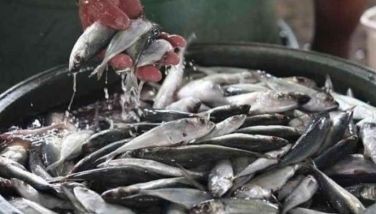ICAEW: Phl should focus on education, investment
CEBU, Philippines - Growth projection for the Philippines has been revised downwards from 6.8 percent to 6.5 percent as unemployment continues to drag on demand causing lukewarm investor sentiment, according to ICAEW’s latest Economic Insight report.
Greater investment in education and foreign direct investment are needed over the long term for the country to transition to a high-value manufacturing economy.
The ICAEW report Economic Insight: South East Asia is produced by Cebr, ICAEW’s partner and economic forecaster. Commissioned by ICAEW, the report provides its 142,000 members with a current snapshot of the region’s economic performance. We focus on the economies of the Association of South East Asian Nations, namely Cambodia, Indonesia, Laos, Malaysia, Myanmar, the Philippines, Singapore, Thailand and Vietnam.
Against the backdrop of a recent emerging markets sell-off,potentially rising interest rates luring investors back to the developed world, and a slowdown in China, ASEAN is looking at a challenging year ahead.
While the least developed ASEAN economies still struggle with commodity dependence, countries just beyond that stage,such as the Philippines and Indonesia are striving to make the transition to an advanced-economy mix of exports.
Two things must happen to allow this progress from a dependence on commodity exports to high-value manufacturing: government-led investment in education and skills, and private-sector-led large-scale investment in production.
Mark Billington, ICAEW Regional Director for South East Asia, said: “Investment in education and skills is key to building a knowledge economy. While the Philippines and Indonesia have done well in providing basic education at the primary-to-secondary level, governments need to look at increasing education investments at the tertiary level, particularly in developing engineering and science skills in order to move up to the higher tiers of production.â€
Once the foundation of a highly educated workforce is set in place, the extent to which the high-value sectors will thrive will depend partly on the amount of inflow of foreign direct investment.
Charles Davis, ICAEW Economic Adviser and Cebr Director said: “Investment is not just about building plants and creating new capacity that way. It is just as necessary that foreign firms setting up new sectors in less-developed economies transfer knowledge and up skill workers so they can produce higher value added goods and services.â€
“In the long term, as these economies grow wealthier, foreign direct investments will increasingly be driven by consumption rather than production, as the large populations of South East Asia should provide increasing numbers of affluent consumers.â€
At present, domestic instability in the Philippines remains a key risk to growth. While reconstruction work from the aftermath of typhoon Haiyan and the nation’s trading links with the US are expected to provide a boost to the Philippines’ growth, unemployment continues to drag on domestic demand and investor confidence. (FREEMAN)
- Latest























